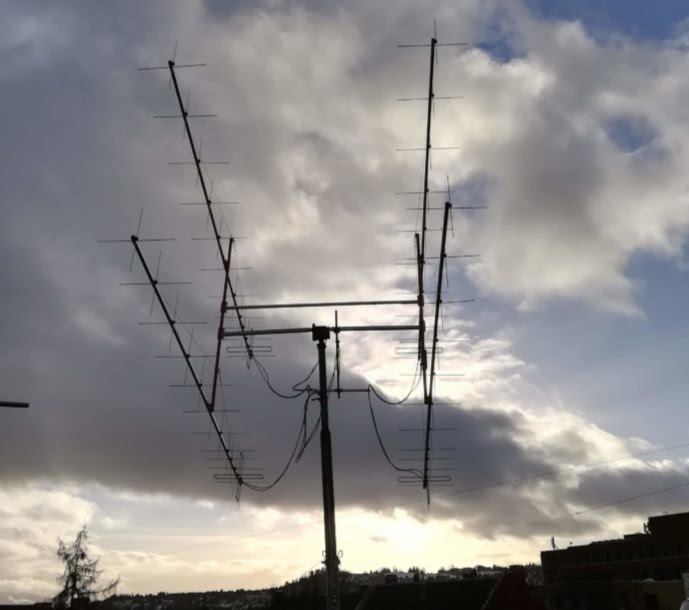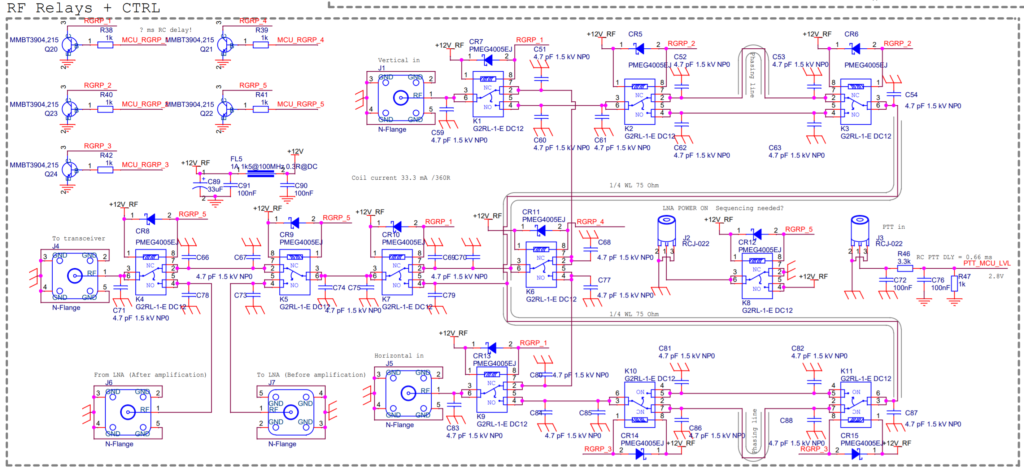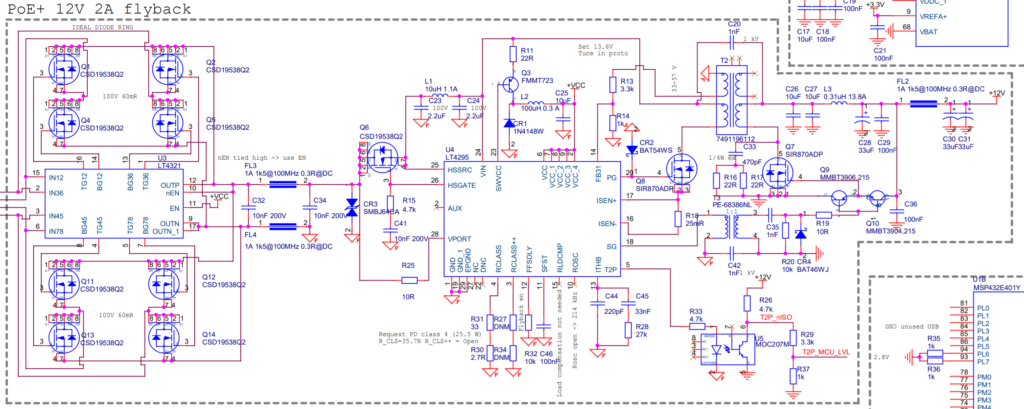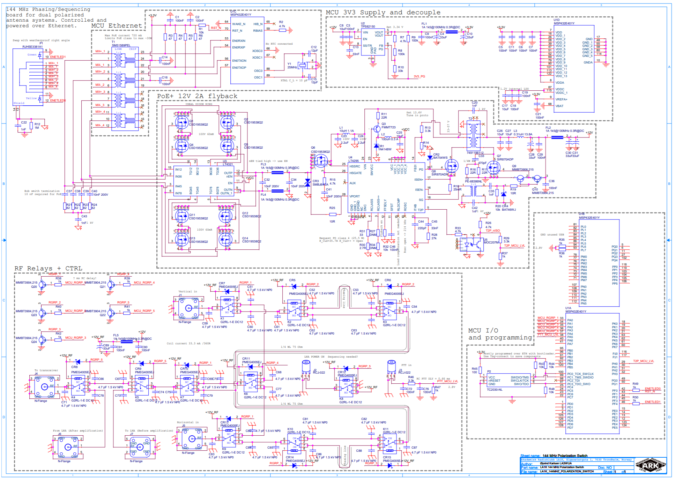We’ve been meaning to add better polarization control to our 4 bay 144 MHz array for some time. With a lot indoor time due to the Coronavirus we have finally made way on the project – well, the schematic at least. A telltale sign of a hardware project that has been too long in the works is immense feature creep, this project is certainly no exception. Below we will elaborate on our rationale in choosing to build a polarization switch controlled by an Ethernet connected microcontroller (MCU) with Power over Ethernet (PoE).

We have an Innovantennas array antenna with four antennas consisting of 12 vertical and 12 horizontal elements each. We have written about this antenna previously, however, it has mostly been in a negative light [1, 2] – as the build quality is woefully inadequate for our conditions. In order to make the antenna work for us we’re making a series of modifications. Until now these have been on the mechanical side, but now we’re set to improve the usability. We will achieve this by allowing electronic steering of the antenna polarization, changing between Vertical, Horizontal, Left hand circular and right hand circular on the fly.
The full schematic (.pdf) for our solution can be found attached at the end of the post. Please note that we’ve yet to complete the PCBs, and test them properly in the lab. This post is mostly just to share our thoughts and ideas on the matter.

The basic idea of our design is to use sets of cheap common relays, in order to create a kW capable polarization switch. The idea of using common relays with shunt tuning capacitors was proposed by W6PQL in the article Using Inexpensive Relays, which is a very interesting read!
The relays in the schematic above will allow for combining the Vertical and Horizontal portions of the antenna. Additionally, the Vertical or Horizontal portion can be skewed 90 degree relative to the other by use of phasing lines, allowing generation of circular polarization. To save space, we’re also adding the protection switch for the LNA onto the same board. An external push-to-talk (PTT) signal will trigger the unit to change polarization, and connect/disconnect the LNA, depending on the transceiver state.
While it would be possible to wire all of this up without a PCB, we figured that it would be a good way to make it all a bit more organized – leading to (hopefully) a longer lifespan. Also, it allows for some of the overkill features that make this project fun.

The author has wanted to play with PoE for a long time, with a particular interest towards seeing if it would be possible to combine PoE with noise sensitive amateur radio applications. This Earth-Moon-Earth setup should be the perfect guinea pig. If this works with relative ease, it would be a good way to power simple applications up to the 50 W level. Some more knowledge on how PoE powered devices (PD) systems are constructed can also be helpful when determining cause of action when affected by noise from these. From experience this can happen quite often with unshielded CAT5 cable.
We are building this board with a much more capable PoE circuitry than actually needed. Current draw will be low enough that we can safely use a 13 W standard PoE, but we wanted to build it “the right way” in order to have a solution that can scale up to our future needs. Efficiency for the solution should be in excess of 90% (not counting resistive losses in the cable).
Along with the PoE, we are trying out an MSP432 microcontroller with integrated Ethernet. This MCU is certainly much more capable than what is needed for simply switching on and off some relays, but it will allow us to experiment with the device on a small scale before moving to more demanding projects. Some of which we will hopefully get back to in the future.
For now we will need to cram some more work into the project, and get a PCB sent to fabrication before the summer holidays. Our first impressions are that this perhaps went a bit overboard with the feature creep, and that PoE is quite complicated and parts count heavy compared to normal power solutions. However, we are very excited to see how well this works (if it works).


Leave a Reply